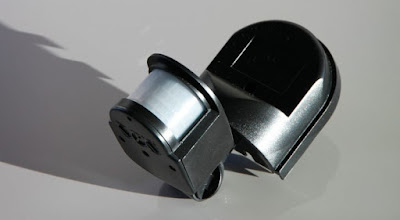What is a sensor?
You see that phone you are holding in your hand? It has built-in sensors. Your PC, laptop, refrigerator, and outdoor security lights also incorporate sensors in their operations. have become an integral part of our everyday life from the devices we use at home to industrial equipment. In fact, sensors have shaped life as we know it today.
So, what exactly is a sensor? A sensor is an electronic component that produces an output through detecting the changes in events or environment. It produces an electronic or optical signal corresponding to the changes detected.
Types and application of sensors
All sensors are primarily classified into analog and digital sensors. However, they can be further classified according to the stimulus they respond to. Below are several types classified based on this criterion;
Temperature sensor
Temperature sensors are some of the most common of sensors. As the name suggests, they are used to measure temperature. There are many types of temperature sensors including thermocouple, resistance temperature detectors (RTDs), thermistors and semiconductor temperature sensors. Each of these sensors has different characteristics making them suitable for different type of applications.
Practical applications
Temperature sensors are applied in numerous equipment. They are incorporated in thermostats that we use to heat our homes. They are also applied in air conditioners, ovens and refrigerators just to mention a few.
IR sensors
IR sensors are photochips that have small photochips that have photocells that are used to both emit and detect Infrared light. They are mostly used in designing remote control technology. They can be used for the detection of obstacles in mobile robots, for instance, robotic vehicles.
Application
They are mostly used in the design of TV remotes. They have also become very prevalent in the remote control of robotic vehicles using IR remote.
Ultrasonic sensors
- An ultrasonic sensor is a sensor that operates on the principle similar to that of a sonar or radar, it measures the distance between it and an object using sound waves. Ultrasonic sensors are either active or passive. Active ultrasonic sensors generate high-frequency sound waves which they then receive back in terms of an echo. They evaluate the echo to determine its distance to an object. Passive ultrasonic sensors on the other end are used for detecting ultrasonic signals present under special conditions.
Practical applications
Ultrasonic sensors are mostly used to measure thedistance of an object. They are used in circumstances where conventional methods of measuring cannot be applied for instance in environments experiencing high temperature or high-pressure zones.Touch sensor
- A touch sensor is an electronic switch that is activated the touch. There are two types of touch sensors, capacitive, resistive and piezoelectric touch sensors.
Practical application
Capacitive touch sensors are mostly used as user interface controllers. Resistive touch sensors, on the other hand, are mostly used to measure distance and pressure.Proximity sensors
A proximity sensor is a type of sensor that is able to detect its distance to an object without touching the target. It emits electromagnetic field or radiation and then detects achange in the emitted field or returned signal.Practical application
- Proximity sensors are mostly used on mobile devices especially on smartphones to detect if someone is within the nominal range. If a target is detected, the lock screen UI appears and the smartphone wakes from sleep mode. Then device then slips back to sleep mode when thetarget cannot be detected or when very close for instance during a phone call.
Pressure sensor
A pressure sensor is a transducer that measures pressure in gases or fluids that generates an electrical signal that is a function of the pressure it is subjected to.Practical application
Pressure sensors are mostly used in the control and monitoring of a vast variety of applications. They could also be used to measure the flow, level, speed, and altitude of liquids and gases.There are many types of sensors and more keep emerging. Their applications also keep growing vis a vis growing automation. It can confidently be said that the future of IoT and automation will be driven by sensors and that future seems to have just started. - Source : http://blog.enrgtech.co.uk/sensors-types-applications/






0 Comments